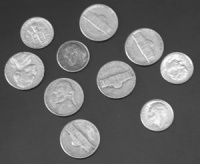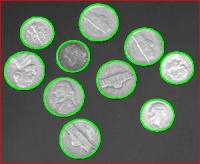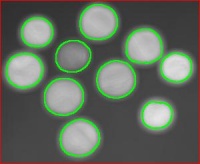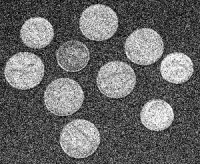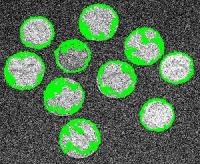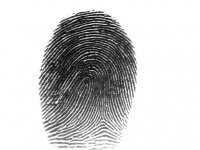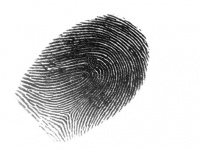This page is a part of CVprimer.com, a wiki devoted to computer vision. It focuses on low level computer vision, digital image analysis, and applications. It is designed as an online textbook but the exposition is informal. It geared towards software developers, especially beginners, and CS students. The wiki contains mathematics, algorithms, code examples, source code, compiled software, and some discussion. If you have any questions or suggestions, please contact me directly.
Analysis of sample images
From Computer Vision Primer
During processing, the areas, perimeters, and contrasts of the objects are also computed. These parameters are used filter objects. The user indicates ranges of parameters of the features he considers to be irrelevant or noise.
The settings may be chosen based on a priori knowledge about the image. For example the image in Fig. 21 is 300×246. To capture the coins and ignore the noise and the small features depicted on the coins, one sets the lower limit for the area at 1000 pixels.
The analysis is not significantly affected by rotations. The output for the original 640×480 fingerprint in Fig. 24 is 3121 dark and 1635 light objects. For the rotated version, it is 2969-1617. By limiting the analysis to objects with area above 50 pixels, the results are improved to 265-125 and 259-124, respectively.
Stretching the image does not affect the count of objects. Shrinking makes objects merge. If the goal, however, is to count and analyze larger features, limited shrinking of the image does not affect the outcome. The count is also stable under noise and blurring.
The method works best with images that represent something 2-dimensional. It fails when the third dimension is essential. It is the case when the images contain:
- occluded objects,
- transparent objects,
- objects well lit on one side and dark on the other,
- X-rays.
Another limitation of the method is that clustered cells or other objects can’t be separated unless there is variation of intensity.
Digital discoveries
- Casinos Not On Gamstop
- Non Gamstop Casinos
- Casino Not On Gamstop
- Casino Not On Gamstop
- Non Gamstop Casinos UK
- Casino Sites Not On Gamstop
- Siti Non Aams
- Casino Online Non Aams
- Non Gamstop Casinos UK
- UK Casino Not On Gamstop
- Non Gamstop Casino UK
- UK Casinos Not On Gamstop
- UK Casino Not On Gamstop
- Non Gamstop Casino UK
- Non Gamstop Casinos
- Non Gamstop Casino Sites UK
- Best Non Gamstop Casinos
- Casino Sites Not On Gamstop
- Casino En Ligne Fiable
- UK Online Casinos Not On Gamstop
- Online Betting Sites UK
- Meilleur Site Casino En Ligne
- Migliori Casino Non Aams
- Best Non Gamstop Casino
- Crypto Casinos
- Meilleur Site Casino En Ligne Belgique
- Bookmaker Non Aams
- онлайн казино с хорошей отдачей
- スマホ カジノ 稼ぐ
- Trang Web Cá độ Bóng đá Của Việt Nam
